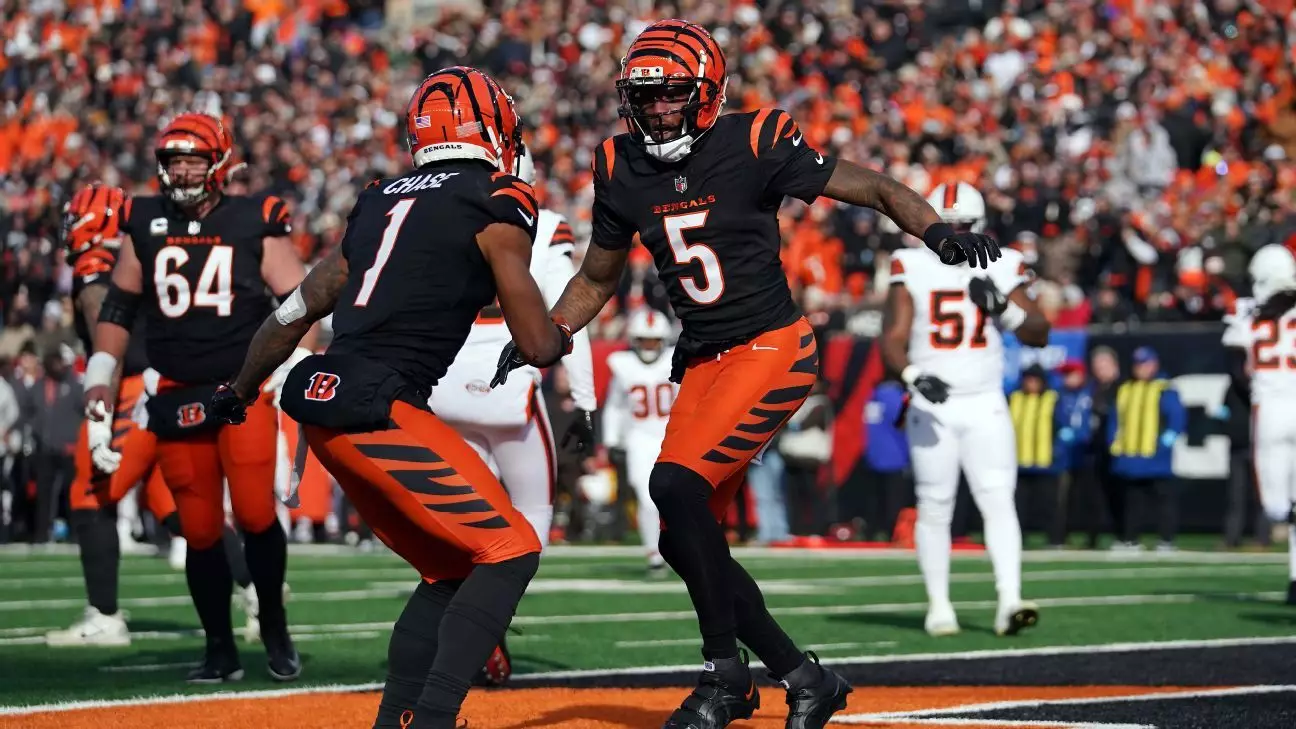The Cincinnati Bengals find themselves at a pivotal moment in the NFL offseason as they seek to retain key players while navigating the tricky landscape of salary cap management. There’s no doubt that the front office is under pressure to act decisively, especially with prized wide receivers Ja’Marr Chase and Tee Higgins, along with defensive linchpin Trey Hendrickson, pending significant contract negotiations. These dealings not only carry immediate financial implications but also set the tone for the franchise’s future direction.
At the heart of the Bengals’ ambitions lies their ability to secure three of the most crucial contributors to their recent success. Ja’Marr Chase, after a record-setting season where he tallied 1,708 receiving yards, 127 catches, and 17 touchdowns, is undoubtedly in line for a pay increase that could position him as the highest-paid wide receiver in NFL history. His on-field production makes it abundantly clear that letting him slip away is not an option. However, with the franchise tag looming for Tee Higgins, who is also looking at a potentially high-value deal as he approaches free agency, the Bengals are confronted with a pressing deadline.
Sources indicate that if a long-term agreement isn’t reached before the March 4 deadline, the Bengals might opt to use the franchise tag on Higgins. This would effectively postpone any decision-making until July 15, giving the team more time to negotiate an extension without risking Higgins’ departure. The stakes are high, as previous tag assignments have often resulted in significant salary increases; Higgins, for instance, could see a jump to roughly $26 million for 2025.
On the defensive side, Trey Hendrickson’s presence is equally critical. With impressive back-to-back seasons, boasting 17.5 sacks each year, he has positioned himself among the elite pass rushers in the league. As defensive salary expectations surge, the Bengals must consider if they can afford to lock him down while concurrently managing the contracts of their high-profile receivers. In an era where premier defenders command contracts surpassing $30 million annually, Hendrickson’s market value is only expected to rise.
The Bengals’ negotiations are, therefore, not only about retaining talent but also about strategically positioning themselves in an evolving NFL. Teams are increasingly recognizing that a strong defense can complement an effective offense, and if the Bengals want to solidify their place among the league’s elite, they must keep their defensive leaders in the fold.
Notably, Bengals quarterback Joe Burrow has publicly voiced his desire for the organization to ensure the retention of these key players. His recent comments on the “Pardon My Take” podcast reveal insights into contractual flexibility within the organization. Burrow explained that converting some of his substantial $275 million contract into a signing bonus could significantly reduce the immediate salary cap impact, thus facilitating the retention of his teammates.
This willingness to adjust his contract underscores the collaborative spirit expected among team players, especially in a league where financial maneuverability can often dictate a team’s ability to compete. Burrow’s approach of potentially taking less money or restructuring his deal to ease salary cap concerns could set a precedent for other players and provide the Bengals with much-needed flexibility during negotiations.
As the franchise approaches key deadlines, every decision made will carry substantial weight. The ability of the front office to effectively manage contracts and salary cap implications will significantly affect the Bengals’ competitiveness in the coming years. The interplay between retaining star power and navigating financial constraints could define the trajectory of this team for years to come.
The Cincinnati Bengals are standing at a crossroads, where the balance between ambition and pragmatism will determine their success. The offseason promises to be a pivotal period that could either solidify their reputation as a postseason contender or set them back significantly, depending on how they handle their impending negotiations. How well they manage their stars’ contracts could ultimately dictate not only their performance on the field but also their standing within the league’s hierarchy moving forward.



Leave a Reply